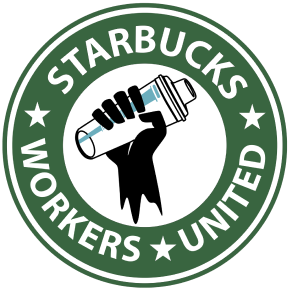As we arrived on the precipice of a major railroad strike that could have seen as many as 100,000 workers walk out on strike, it is essential that we remember the long history of labor struggle that has led us to this moment. Those well-read in American labor history will know that this would not have been the first significant railroad strike in United States history; in fact, it was a major railroad strike in 1877 that kicked off one of the first nationwide worker uprisings in this country. Also called “the Great Upheaval,” the general strike led to an explosion of trade unionism and leftist organizing. So what lessons can we learn from a 145-year-old strike? Also, how can the information help us structure mass labor movements in the future?
In the late 19th century, a major economic crisis known as the Panic of 1873, sparked a chain reaction of bank failures and the temporary closure of the New York Stock Exchange. Subsequently, European and American investors began rapidly selling off the investments they made in emerging American projects, namely, railroads. By 1877, four years into the economic depression, railroad companies had taken full advantage of the economic crisis to cut wages and break newly establish trade unions that had just been formed by workers in the wake of the Civil War. Already underpaid and overworked under dangerous working conditions, rail workers began organizing on a massive scale. On July 16, 1877, workers at the B&O station in Martinsburg, West Virginia, decided to occupy the train depot to protest a 10 percent wage cut. The rail workers uncoupled the locomotives in the station and stored them in the roundhouse, refusing to open the railways until the cut was rescinded. West Virginian governor, Henry M. Mathews promptly deployed local militia and later the national guard when authorities could not break up the crowd that had gathered. Strikes along the B&O line quickly spread north and westward through Albany, Buffalo, Philadelphia, Pittsburgh, Chicago, Louisville, and Cincinnati as socialist newspapers spread the news of the strike and ensuing confrontation. In many cities such as Louisville and Pittsburgh, striking railroad workers were joined by other workers from nearby foundries, mills, mines, and factories forming local general strikes. In Louisville, the city-wide general strike briefly broke the color barrier, bringing black and white workers together over their shared grievances.
As the strikes began to spread, violent clashes between workers and the national guard began to ensue. In Pittsburgh, Philadelphia National Guardsmen with fixed bayonets charged the striking workers. As many as 20 were killed as the crowd of workers exchanged gunfire with soldiers and set fire to rail engines, cars, and surrounding buildings. Although the National Guard requested additional reinforcements, their arrival was delayed due to the courageous acts of striking workers in neighboring towns who, in a moment of brilliant solidarity and coordination, tore up tracks and derailed cars leading to Pittsburgh. The strikes did, however, eventually lose momentum as the National Guard ruthlessly and violently suppressed the movement. In Chicago, a Marxist group, the Workingmen’s Party of the United States (later the Socialist Labor Party of America) provided some structure and organization to the revolt; however, they were the exception, as many of the uprisings were spontaneous and unorganized. Without significant leadership, the Great Railroad Strike of 1877 eventually collapsed. During its height, more than 100,000 workers participated, halting more than half the country’s freight traffic.
There are significant lessons to be learned from the Great Railroad Strike of 1877, one of the most important of which is that solidarity is critical to mass labor movements. Without it, we leave ourselves vulnerable to isolation and fatigue. Structured organizing and calculated, goal-oriented leadership can mean the difference between a successful general strike and a lost opportunity. Luckily for modern railroad unions like BELT and SMART-TD, the two largest railroad unions in the US, an agreement was made to honor the picket line if any railroad union went out on strike. Another, and arguably more valuable lesson to be learned, is that under capitalism, the US government will often side with or protect the interests of the bourgeois capitalist class. This was made evidently clear by the recent bipartisan bill passed by the Senate to prevent the upcoming railroad strike. In an 80–15 vote, the senate deemed the strike illegal and an additional 52–43 vote rejected paid sick leave, which remained a major point of contention between railroad managers and rail workers. Some prominent Democrats who voted in favor of preventing the strike included Cory Booker, Chuck Schumer, Jon Ossoff, and Amy Klobuchar.
Sources:
- Molloy, Scott. Review of Streets, Railroads, and the Great Strike of 1877. Technology and Culture, vol. 41 no. 3, 2000, p. 636-638. Project MUSE
- Smith, Shannon M. ““They Met Force with Force”: African American Protests and Social Status in Louisville’s 1877 Strike.” Register of the Kentucky Historical Society, vol. 115 no. 1, 2017, p. 1-37. Project MUSE
- “Great Railroad Strike of 1877.” Encyclopædia Britannica, Encyclopædia Britannica, Inc., https://www.britannica.com/topic/Great-Railroad-Strike-of-1877.
- Railroad Strike of 1877, http://www.encyclopedia.chicagohistory.org/pages/1037.html.
- Roll Call Vote 117th Congress – 2nd Session, https://www.senate.gov/legislative/LIS/roll_call_votes/vote1172/vote_117_2_00372.htm




